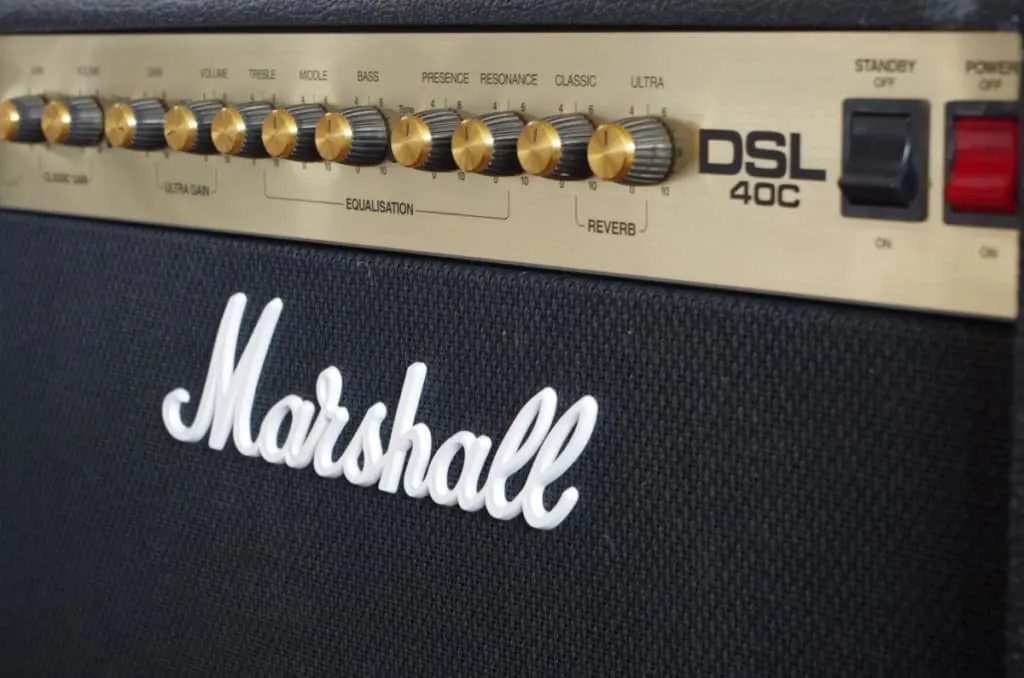Preamp tubes are devices used in amplifiers to shape the tonal characteristics of a guitar’s sound. They essentially prepare the guitar’s signal for the power amp section, by boosting its dynamics.
Do preamp tubes need to match?
Preamp tubes are, in the majority of cases, self-biasing. Therefore, they do not require matching. Only tubes that are in a push/pull Class AB circuit need to be matched because they share a common bias voltage. Power tubes are an example of this.
Despite the seemingly straightforward answer to this question, many audiophiles argue that matching preamp tubes do offer some sonic benefits.
Nevertheless, this is merely a personal opinion and doesn’t change the fact that preamp tubes do not need to match to carry out their desired function. In the rest of this article, I’ll discuss in detail the topic of matching preamp tubes.

Why Preamp Tubes Don’t Need To Match
When replacing or changing preamp tubes, you don’t need to worry about using matched pairs, or whether they are biased. This is because almost all preamp tubes are self-biasing.
This means that unlike power tubes, having two identically matching sides is not necessary.
Changing preamp tubes within an amplifier is a good way to improve the overall sound, or achieve the desired tone.
The difference is likely to be subtle, but to someone with a keen ear for tonal variations, it is necessary to identify and install the ideal preamp tubes to create the tone you’re looking for.
When you begin your search for replacement preamp tubes, you’re likely to come across a variety of manufacturers who specialize in the production of 12AX7s. These are the most common type of preamp tubes. The vast majority of tubes installed in an amplifier’s preamp section will be of the 12AX7 variety.
Check out the 12AX7s Pre Amp Tubes here on Amazon.
Not all 12AX7 preamp tubes are identical in their makeup though. Manufacturing processes vary, as do the quality of the materials used to construct the tube. Logically, one would conclude that using two of the same make of 12AX7 preamp tubes is a good idea.
I wouldn’t argue with that statement.
But despite there being potential sonic benefits to matching preamp tubes, it is not a necessity. Overall, the tonal difference is likely to be very minimal, and only experienced audiophiles would consider it to be essential practice to match preamp tubes.
The technical reasons that preamp tubes don’t need to match are also worth considering. Matching refers to the process of testing multiple tubes for their transconductance level and the current draw when the preamp tube is under load.
Using 12AX7s as an example, matching these preamp tubes is a good idea, but by no means essential. These tubes, along with the 6DJ8 variety, are known as linestage tubes. When they are matched, this will ensure that you get even gain from both tubes.
The matched preamp tubes are also likely to age at the same rate, although this is not guaranteed.
A common argument for matching preamp tubes is that you want them to degrade simultaneously to the same degree, to avoid imbalances occurring or unnecessarily needing to replace one of them.
A rule of thumb to follow is that a good preamp tube with a solid linestage or phono stage design should be capable of working with tubes that vary by around 20 percent. Over a tube’s lifetime, its characteristics will naturally alter due to the usage it is subjected to, so manufacturers try to account for those changes by providing so lenience.
Below is a table which shows some popular tube types, and whether they need to be matched.
| Tube Type | Do they need to match? |
| 12AX7 | No |
| 12AY7 | No |
| EF86 | No |
| EL34 | Yes |
| EL84 | Yes |
Preamp Tubes: Essential Info
As I previously stated, the practice of matching preamp tubes is, to a certain degree, recommendable.
However, it is not essential by any means. To get to the bottom of why preamp tubes do not need to match, we must establish the functions and basic principles of these vital devices.
Most preamp tubes used in modern amplifiers are of the triode variety. This essentially means that there are three main parts to the tube. Each of the parts plays an integral role in the function of the preamp tube, and in deciding whether they need to match.
The three parts are:
- Grid
- Cathode
- Plate
The grid in a preamp tube is the input, at which point the low-level signal controls the flow of electrons from the cathode to the plate.
To increase the gain of the input signal, the output signal is commonly sourced from the plate. However, in rare instances, such as buffered effects loops, the output signal is sometimes taken from the cathode pin. The pin, however, is incapable of supplying any gain to the input.
It’s also worth noting that although the majority of preamp tubes are of the triode variety, and therefore don’t need to be matched, other types would benefit more from matching.
Pentodes, for example, have five internal parts that provide screens and allow for additional control over the flow of electrons. These types of preamp tubes are rare nowadays and have mostly been replaced by manufacturers, favoring the triode variety.
Check out this video that shows how Tube Amps work.
Do Other Amp Tubes Need To Match?
One thing that often confuses musicians about whether their tubes need to be matched, is the fact that there are other types of tubes than the preamp variety that are designed in significantly different ways.
Power tubes, unlike preamp tubes, do generally need to match. This is because each power tube needs to have an identical account of idle plate current. The amplification characteristics of the tubes also need to match up when they are used in a guitar amp, for example.
Why Do Power Tubes Need To Be Matched, But Preamp Tubes Don’t?
Power tubes need to work together within an amplifier, to produce the best around quality and promoting longevity. Matched power amp tubes use the cathode as their primary source of electrons.
A filament is employed to produce the necessary amount of heat, which releases the electrons from the cathode within the tube. Electrons have a negative charge, so the plate uses a positive voltage, causing them to be attracted.
Unlike preamp tubes, power tubes have a device called a control grid within them. This is positioned between the cathode and the plate and has a negative voltage, which allows it to repel the electrons and prevent them from flowing freely to the plate.
The more negative the voltage of the control grid is, the fewer electrons can pass through it. Likewise, if the grid is made less negative, the electrons pass through more frequently. This flow of electrons is measured at the plate, and that provides us with the plate current.
- The issue with both preamp tubes and power tubes when it comes to matching is that there is so much variation on the market today.
You might find that you have one tube that is in fine working order, and the other has degraded more rapidly, but when it comes to replacing them you can’t find the exact make and model to match the pair.
The term “matching” also carries a different meaning, which can add confusion to the topic. Materials, mechanical tolerances, signal gains, and distortion characteristics are all aspects that would be matched.
Tubes vs. Solid State Amps
- If you have a solid-state amplifier rather than a valve amp, you will never need to change the preamp tubes or worry about them matching.
Solid-state amps, rather than using tubes, are fitted with transistors. Transistors still serve the same purpose as tubes; they do so using different technology. They are also often much less expensive than their tube counterparts.
The reason that many guitarists prefer tube amplifiers is because they are considered to produce a warmer, more authentic tone.
Of course, this is purely subjective, and some may argue that solid-state amplifiers are superior in sound, and for the fact that you don’t need to match preamp tubes or swap out the power tubes frequently.
Tube amplifiers are characterized by their ability to add distortion. This natural-sounding break-up is highly sought after by guitarists and has been a staple of records since the early 60s when tube amps came to the forefront.

Related Questions
What tubes do Fender amps use?
Fender generally uses 12AX7 preamp tubes in their amplifiers. All Marshall, Mesa Boogie, Vox, and Peavey use the same preamp tube as Fender, as they are the most reliable and effective choice.
Are tube amps louder than the solid-state?
Tube amplifiers are usually louder than their solid-state counterparts. The lower voltage makes it seem that the amp would be quieter, but in fact, a tube amp of 10 watts would be louder than a solid-state amp of 50 watts.
Check out my article that discusses how much electricity amps use. You can read it here.
How long does it take for a tube amp to warm up?
Tube amps should be given adequate time to warm up after switching them on. If they are not fully warmed up, the tone and output will suffer. Around 20 minutes should be enough time to get the tubes fully warmed up.
